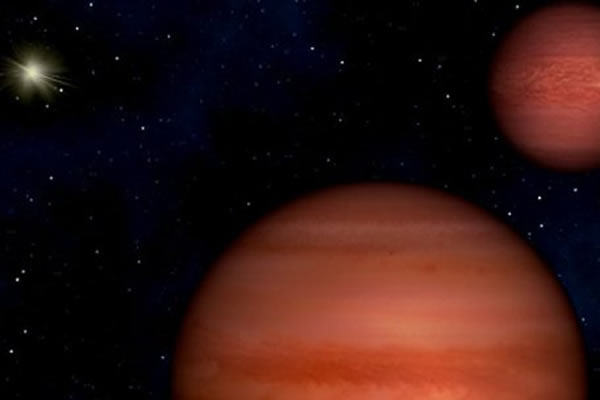Tiny Star System Found On Galactic Doorstep
Tiny Star System Found On Galactic Doorstep
Spanning the gap between large planets and small stars lies an astronomical gray area. This is the domain of brown dwarfs, dim stellar cinders glowing faintly in the darkness. And a binary pair of these stars has just been discovered only 6.5 light-years away, making it the third closest star system to our own.
Star system WISE J104915.57-531906 was announced officially just a few days ago. The tiny star system, orbiting each other once every 25 years, with a separation of 3 AU, was discovered by Kevin Luhman, a researcher at Penn State’s Center for Exoplanets and Habitable Worlds. It is, in fact, the closest star system to be discovered since Barnard’s Star was found in 1916!
Brown dwarfs are the stellar embers that never caught aflame. The reason why? They are simply not massive enough to fuse hydrogen — the lifeblood of any star — in their cores. All fully-fledged stars, from tiny red dwarfs like Proxima Centauri to massive blue supergiants like Eta Carinae, are constantly fusing hydrogen in their cores. Too small to accomplish this, brown dwarfs are, instead, forced to seek easier power sources. They’re fueled by deuterium* fusion, and sometimes lithium fusion too.
In fact, there are a lot of unanswered questions about brown dwarfs. We know that they can form as stars do, and some are known to have planets. Given that some estimates suggest they could comprise up to two thirds of all stars in our neighborhood, there’s a good chance that they may be good places to look for planets. Luhman shares this view, especially given how close this new-found star system is to Earth.
Because they’re so underpowered, brown dwarfs glow like hot coals, rather than shining as their heavier brethren do. They appear brightest in infrared, and the smallest of them emit no visible light at all. This explains why WISE J104915.57-531906 managed to escape our attention for so long. Against the much brighter stars in the plane of the galaxy, these faint objects were simply far too dim to be discerned.
The catalog number WISE J104915.57-531906 (in lieu of any true name, at least for now) shows that the data for this discovery came from NASA’s Wide-field Infrared Survey Explorer (WISE) satellite, which scoured the sky in infrared light from 2009 to 2011. One of the goals of WISE was always to discover the closest star systems to the sun. This latest find, then, is a triumph for the team behind WISE, led by principal investigator Ned Wright.
Luhman managed to spot this diminutive binary in the WISE data by using a fairly nifty little trick. You see, all stars move as they drift through our galaxy, and the closer they are to us here on Earth, the faster they seem to move relative to other stars. This effect is called parallax, and is extremely useful in astronomy.
The apparently speedy motion of this star across the sky was what allowed the pair of dwarfs to be found. Luhman then used the Gemini South observatory in Chile to take some followup observations, discovering that this object is a binary, and checking the spectra of the pair to identify them as brown dwarfs.
“Based on how this star system was moving in the images from the WISE survey, I was able to extrapolate back in time to predict where it should have been located in the older surveys and, sure enough, it was there,” Luhman explains. ”It was a lot of detective work. There are billions of infrared points of light across the sky, and the mystery is which one — if any of them — could be a star that is very close to our solar system.”
Mar 15, 2013 04:50 AM ET by Markus Hammonds












